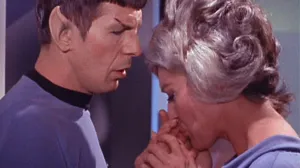What makes a good Naruto Shippuden episode? A good answer can be found by looking at Naruto‘s relationship to One Piece: among fans, the conventional logic has been that Naruto is character-driven while One Piece is a world-building behemoth. The best Naruto Shippuden episodes reflect Kishimoto’s competitive love for the best shonen stories around when he rises to the occasion and forces the line between characterization and world-building to blur.
Videos by ComicBook.com
Warning: Major Spoilers Ahead for the Naruto Anime!
The best Naruto Shippuden episodes hardly feature the titular spunky protagonist at all. They aren’t necessarily the ones with the best fights (although those are candidates), nor are they the biggest tearjerkers (also candidates), nor are they the ones that show the silly levity Naruto can bring to the table. Its best episodes are those that bring Naruto‘s world to life, using its characters as vessels for its world-building with the incomparable formula that has made the lightning ball of contradictions a mainstay shonen for decades.
1) “Thank You” (Episode #249)

One such example of Kishimoto’s utter mastery of contradiction is on display in this episode, where Naruto first meets his mother, Kushina. It goes without saying that, on the surface, these are precisely the feelings you expect: a sense of gratitude and closure for Naruto and a sense of achievement and pride for Minato and Kushina. But beyond that lingers something a little more bitter: for Naruto, a tinge of resentment and indignation; for his parents, a crushing sense of missed opportunity.
We aren’t being flowery for no reason. This episode has long stood as one of Naruto’s best and most emotional because it demonstrates Kishimoto’s writing at its smartest: presented simply enough to ring true with Naruto’s shonen demographic, yet sensitive enough that any viewer can pick up on the complicated picture of the human soul he’s painting.
2) “Kakashi, My Eternal Rival!” (Episode #241)
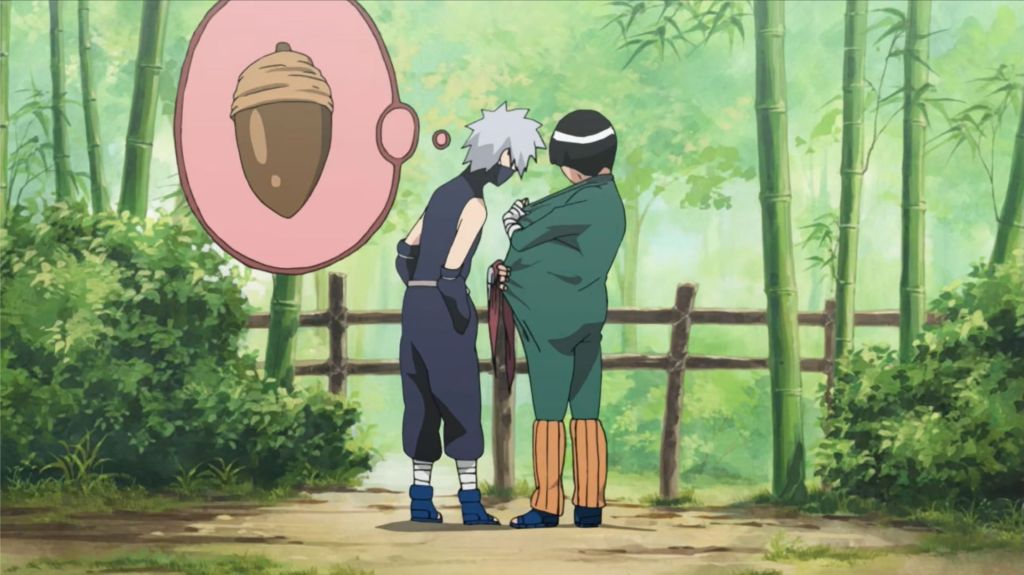
When you’re talking about Shippuden, you’re talking about the filler, too. Naruto‘s manga is very terse; every panel carries significance. The flip side is that some characters wind up under-explored. Naruto is a brilliant example of how filler can lift up a work, fill it out, or simply let it breathe. By now, the heart of Naruto lies just as much in its filler as its canon.
There are few better examples in Shippuden than “Kakashi, My Eternal Rival!”, revisiting Kakashi and Might Guy’s shared childhood. Not only is it sweet and fun to watch, but it rounds out the dynamics within Konoha itself. Particularly in Shippuden, which can be faulted with pushing out the series’ supporting cast, a few moments aside with Kakashi and Guy is a breath of fresh air reminding the viewer that Konoha is a thriving center of parallel lives.
3) “Team 10” (Episode #82)
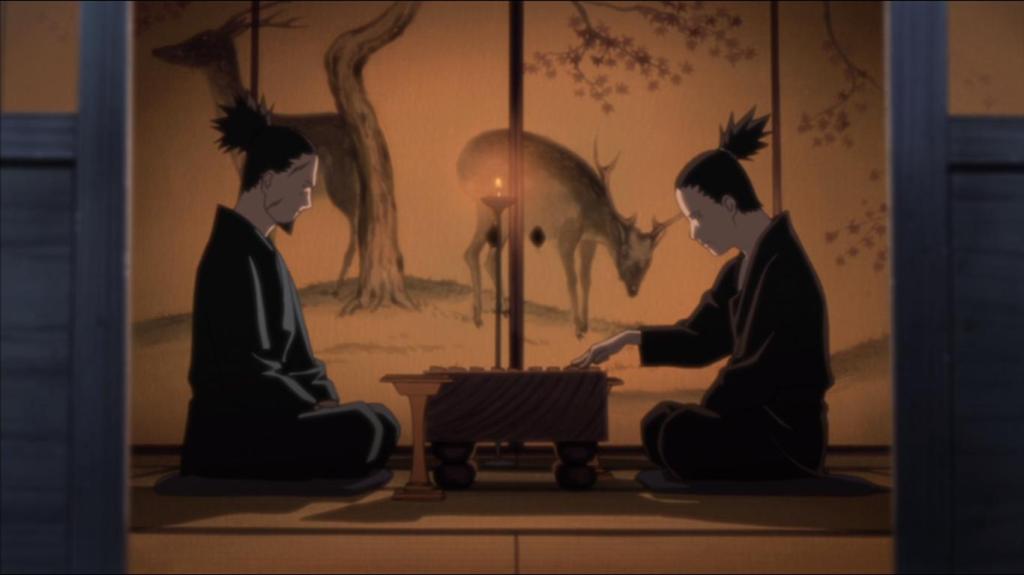
Those parallel lives are lived from beginning to end―often, an end that’s quite tragic. Few episodes encapsulate this, like “Team 10”, which explores the emotional fallout of Asuma’s death. It’s a genius episode exploring the way shinobi, like everybody in the world (if sometimes only from the shadows, weeping ninjas themselves) necessarily challenge the norms that bind them. It grinds against the expectation that shinobi must look back once, then press forward in silence.
The conversation between Shikamaru and his father, where Shikamaru is comforted by the permission to mourn and to cry, resonates especially with Naruto‘s young male demographic since masculinity is shaped by social pressure toward unwavering detachment. Letting the steely disposition of a “true shinobi” falter for a moment made Shikamaru no less of a shinobi nor a man―if anything, it made him more of one. Moments like these show why this episode is uniquely touching.
4) “Eight Gates Released Formation” (Episode #420)

The through-line here from Asuma to Might Guy is devotion to the shinobi society and the horrifying blaze of glory when its dogmas can’t sustain. In those moments, the fictional foundation of Konoha and Naruto pokes out from under their corrupted veil of apparent truth. Remember when Naruto, once upon a time, was an underdog story? Characters like Might Guy and Rock Lee exist to show something more insidious and undermine the underdog narrative.
For example, both Guy’s backstory and Rock Lee’s arc show how a lack of chakra puts one on shinobi society’s margins. However, it’s Guy’s absolute mastery of taijutsu that allows him to present the first real threat to Madara. The differences that made him an “underdog” provided him a unique strength others lacked―and which was apparently deeply necessary. Coming on the tail end of filler that explored his origins and extreme discipline, Might Guy’s opening of the Eight Gates, one by one, is excruciating and visually stunning.
5) “The Tale of Jiraiya the Gallant” (Episode #133)
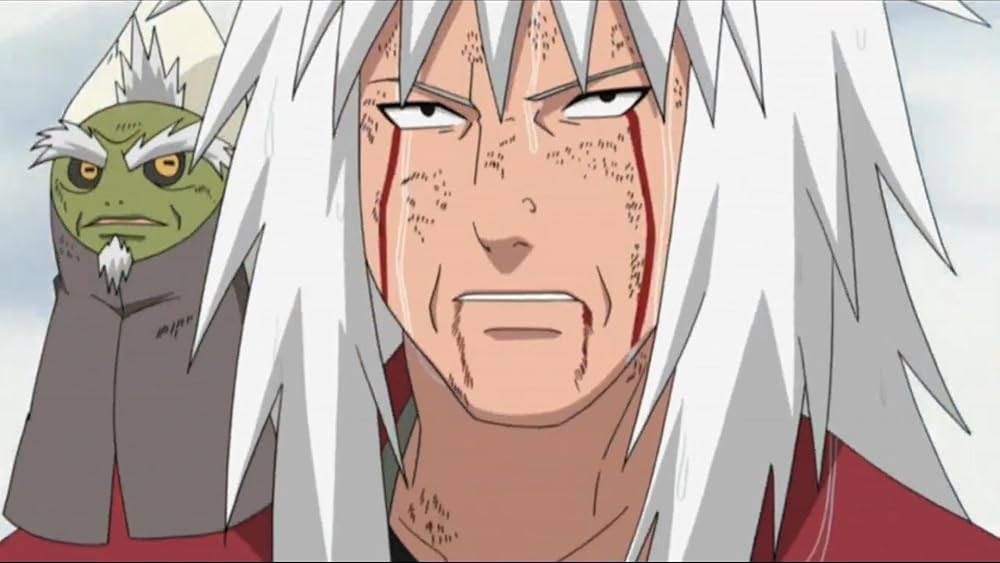
Jiraiya, like Might Guy, possesses a beautiful soul that just happens to be dotted with warts. “The Tale of Jiraiya the Gallant” doesn’t make the list because Jiraiya’s death at the hands of Pain is horrifically sad―it is―but because it shows something Naruto, and especially Shippuden, has over myriad other shonen: an unreal ability to become a more enriching, rather than flattened, experience with a critical eye.
In the midst of Shippuden, when viewers are just as hopped up on Konoha’s ideology as Jiraiya, it’s a poignant end to a heart-wrenching exploration of Jiraiya’s generosity to the handful of wartime orphans who would comprise Akatsuki. Brilliantly complicated in hindsight; straightforwardly heartbreaking in the moment. You cheer when the frog carries the message back to Konoha against all odds, but as it dawns on you that Jiraiya died in the name of the village that orphaned his killers, his arc starts feeling deeply conflicted.
[RELATED: Naruto’s Greatest Villain Had a Quote that Defined Not Only Himself but Naruto Too]
6) “The Bridge to Peace” (Episode #253)
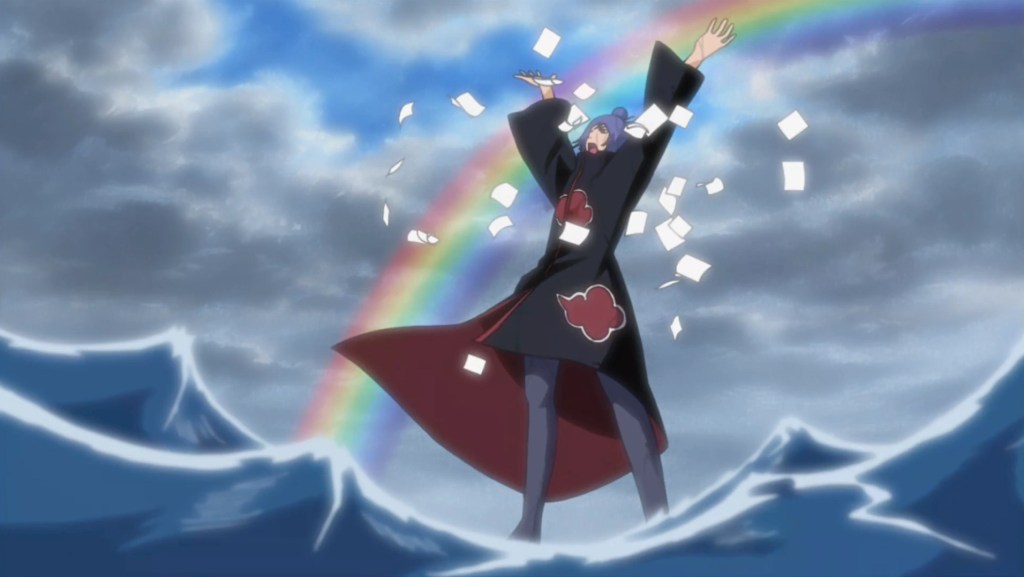
Konan’s showdown with Obito exemplifies that same narrative tension in Amegakure, where so much of Shippuden‘s narrative found its root when Jiraiya laid down impermanent roots for a handful of powerful young ninja. Amegakure, permanently war-torn, hadn’t been touched since Naruto promised Konan and Nagato support and resources. Spoiler alert: fast-forward to Boruto, long after Naruto becomes Hokage, and it still hasn’t been touched.
Konan, alone and (as per usual) forgotten by Konoha puts up an incredible fight against Obito, who wants Nagato’s Rinnegan. Konan’s unique paper-jutsu shines thanks to the overall fluidity of the fight choreography. Human errors of Konoha’s campaign for total dominance―one, the last of the Amegakure orphans; the other, a traumatized lone wolf captivated by a stray Madara―try to eat each other whole. In the end, Konan is taken down. It’s not just one of Shippuden‘s best and highest-stakes fights; it’s a rare example of fatal conflict in Naruto‘s margins.
7) “Truth” (Episode #141)
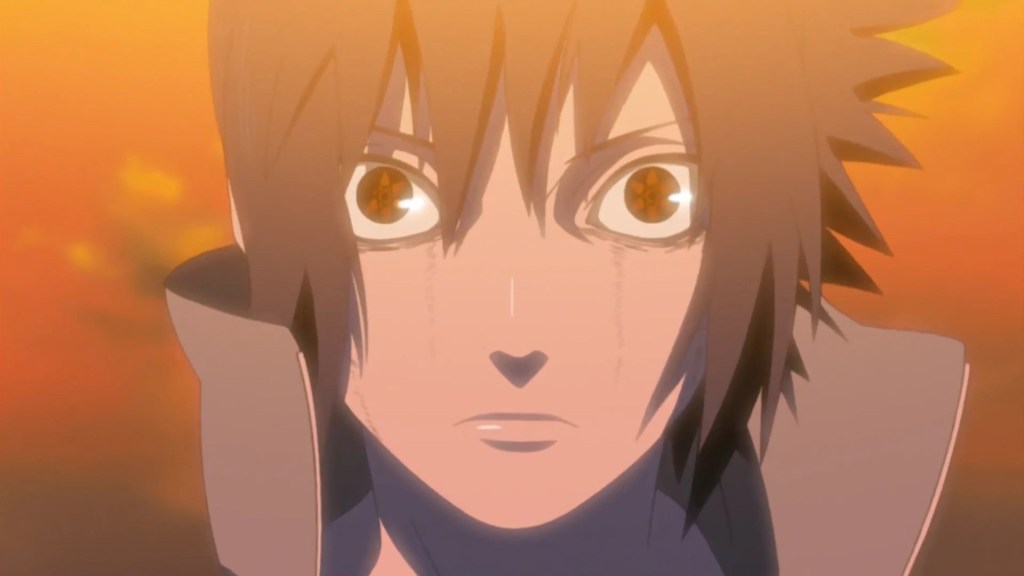
We wish we could say these are all just sly and contrarian readings of the adored shonen, but Shippuden was never shy of turning Naruto‘s seemingly righteous presentation of the shinobi order on its head. While, yes, Obito’s explanation of Itachi’s role in the Uchiha massacre does contain a slew of intentional manipulation, it’s true at its core. The episode isn’t called “Truth” because Obito reveals the absolute big-T “Truth” of matters, but because Obito’s manipulation of events toward his own aims isn’t that different from Konoha’s own.
While it blows the mind of first-time watchers, Sasuke’s horror and disbelief in the wake of Itachi’s death never fails to disarm even Naruto veterans. There are a lot of reasons to love this episode, and it’s potent on its own. However, in the grand context of the series, it’s among Naruto‘s most pivotal episodes ever: its implications are hard to overstate, leading directly to Sasuke and Taka’s infiltration of the Five Kage Summit, the Fourth Great Ninja War, and Sasuke’s ultimate role as Naruto’s final obstacle.
8) “Madara Uchiha” (Episode #322)
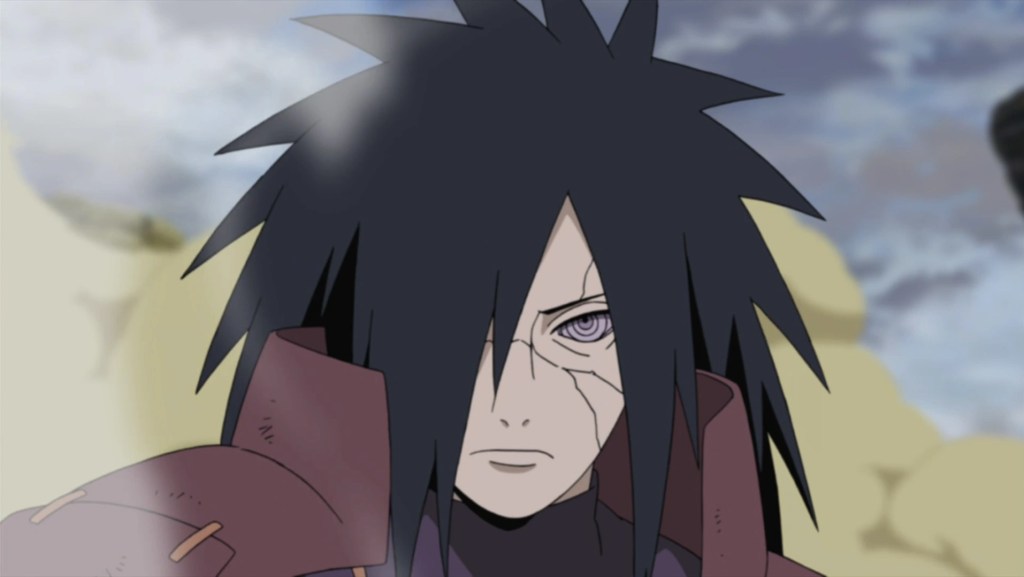
There exists a critical window during Naruto Shippuden’s run where Madara is positioned as the pivot of the whole shebang. Regardless of your thoughts on the Otsutsuki twist later, it depends on a point of no return where, all of a sudden, you realize that Madara wasn’t the final boss of Naruto: that marks the end of the Madara terror window. Before that, though, Madara being unleashed on the whole shinobi alliance was the instant of absolute terror Naruto had been carefully building toward.
Ripping through the shinobi alliance effortlessly and making time for Dio-like taunts, episode #322 is Naruto at its most hype. Madara is relentless, but as viewers, we’ve already seen Naruto surmount the insurmountable countless times over, so there’s a hint of anticipation concealed behind electric nerves while we await his off-the-wall victory. Above all, though, Madara’s explosive combat debut is when Naruto Shippuden feels its most coherent, grandiose, and united with the narrative Naruto carefully threaded.
9) “A Will of Stone” (Episode #332)
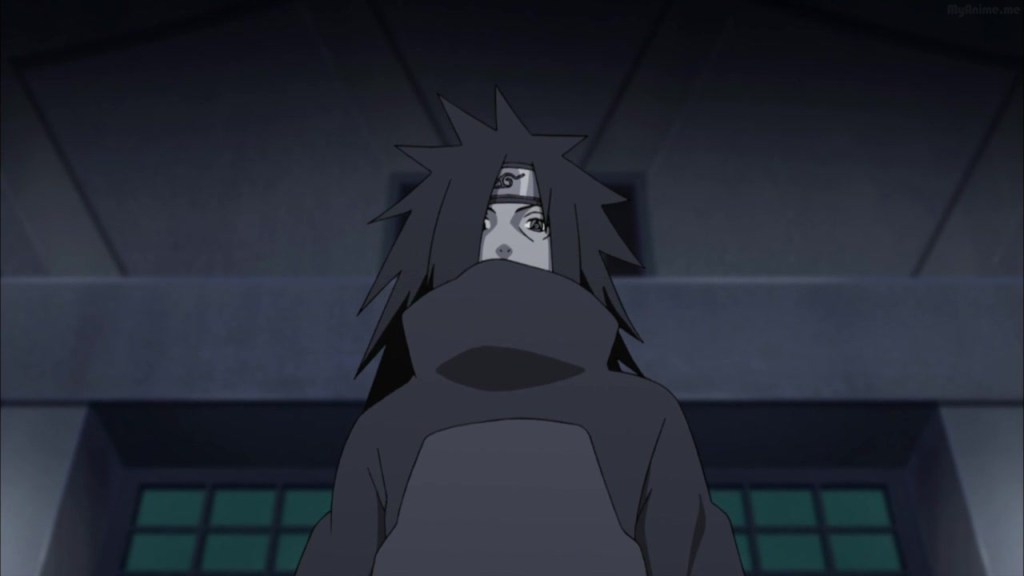
If “Truth” complicated viewers’ feelings, “A Will of Stone” complicates “Truth”. In the midst of Madara’s battle with the Five Kage, Sasuke detects a resurrected Itachi and tries to track him down. The two counter one another’s Susano’o as Sasuke forces a meeting where, in his typical fashion, Itachi steals the show entirely.
Whether that’s a good thing or not is in the eye of the beholder, who is certainly just as confused as Sasuke―but the final meeting between the brothers brings a profound sense of closure to a major Sasuke arc that started in Naruto and motivated the majority of Shippuden. The episode balances its hype stand-offs with a meeting that can only be described as one of Shippuden‘s most touching.
10) “The All-Knowing” (Episode #366)
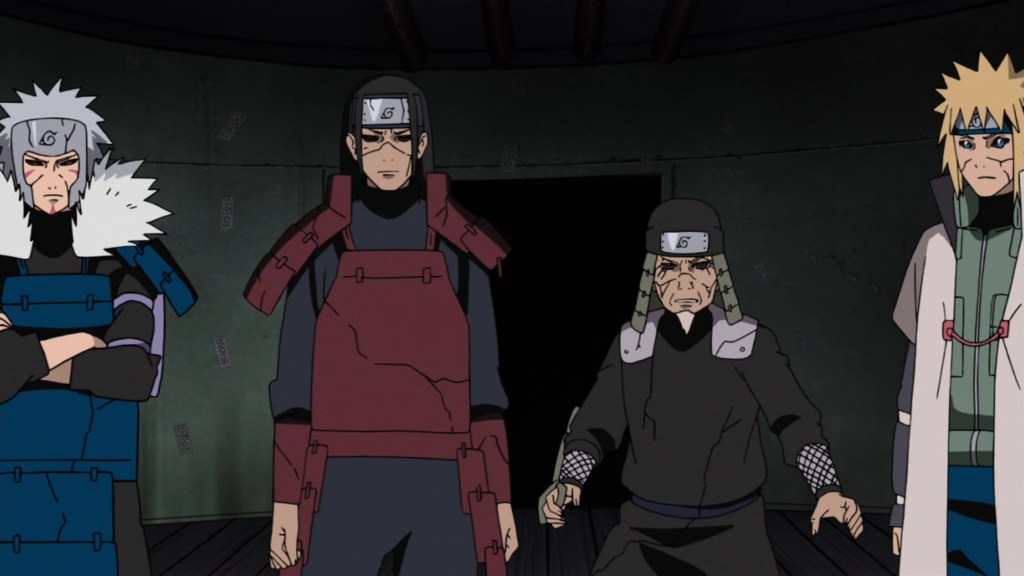
What makes Naruto incredible is its self-interrogation; what makes it enduring, for better or worse, is its resilience in asserting its own position. “The All-Knowing” sees the resurrection of previous Hokage, who are confronted by a Sasuke in search of answers. It kicks off a deep dive into the history of Konoha and the Hokage, but it also sets the tone of total animosity between the Senru and Uchiha clans with moments like Tobirama’s immediate distrust and attendant aura-off with Sasuke.
For the first time, viewers get to see Konoha’s history in front of their own eyes, living and breathing, from Hashirama to Minato: their motivations, the faces of those who (directly or indirectly) orchestrated the finer details of the entire conflict playing out on the screen for years leading up to this very moment. Then, for just a moment, Konoha seems so brittle and young―four generations of Hokage, really, isn’t that many―while an ardent Sasuke investigates their very right to exist.
Of course, Naruto takes its own line―the one it holds up until the very end, when Naruto wins over Sasuke, hellbent on total revolution. Naruto is a brilliant (and brilliantly flawed) series whose best episodes see its contradictions overflow with excess, and the characters who carry the burdens of those contradictions pushed to the edge. In other words, in a world where truth and reason are the hand-me-down dictates of war, victories, and losses alike, Naruto Shippuden‘s best episodes are those where heroes and villains alike seem equally unreasonable.
At ComicBook, we pride ourselves on more than simply pleasing the fans, while also presenting some of Naruto’s most provocative episodes, so some beloved installments were left out of this list. If there’s an episode you think should be here, though, make your case in a comment below!




